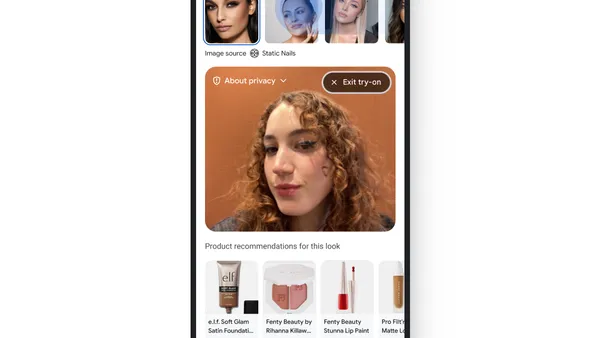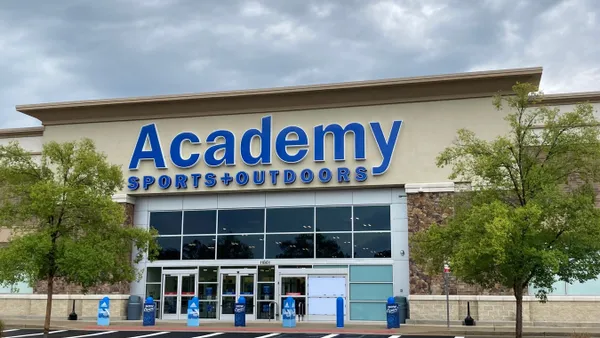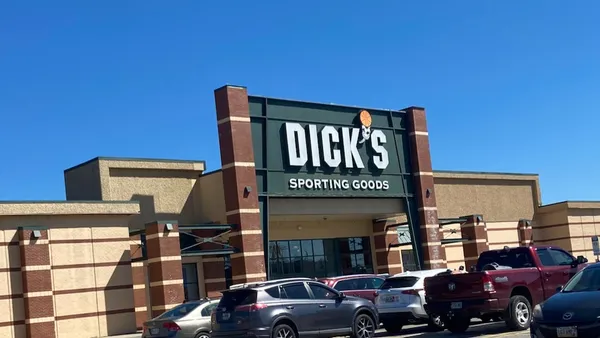You probably don’t think of Indiegogo as an e-commerce company… but perhaps you should.
While the eight-year-old crowdfunding platform remains focused on helping entrepreneurs and creatives shepherd their projects from concept to market, Indiegogo’s scope now extends far beyond fundraising: In early 2015, the firm launched InDemand, a service enabling successful crowdfunding campaign owners to offer product pre-orders, manage customer analytics and maintain communications all from their original campaign page—minimizing disruptions as startups transition to the next phase of their business.
Indiegogo is also helping campaign owners deliver their products to retail. A recent partnership with Brookstone is bringing Indiegogo-backed merchandise to more than 200 brick-and-mortar stores across the U.S. and Puerto Rico, as well as the web. In addition, Indiegogo and Brookstone are collaborating on Brookstone Launch, an end-to-end development, manufacturing and retail launch effort.
Indiegogo continues to expand its digital commerce efforts: In mid-May, it acquired assets from Celery, whose platform enables merchants of all sizes to accept pre-orders and sell products from their own websites. Creators on Celery can now leverage InDemand tools to launch and promote projects, raise funds and sell before and after manufacturing.
Days following the Indiegogo/Celery announcement, I met with Slava Rubin—Indiegogo’s co-founder and chief business officer—and Celery co-founder/CEO Chris Tsai at the inaugural Shoptalk retail conference to discuss the new partnership, what it means for retailers and what established merchants can learn from the crowdfunding phenomenon. Our conversation has been lightly edited for clarity and length.
RETAIL DIVE: I must confess that I’m a bit surprised to meet with Indiegogo at a retailer conference. What brings you here?
RUBIN: That’s a great place to start. Indiegogo launched in January 2008, and the idea was to democratize access to capital. There are all these gatekeepers—the VCs, the banks and the grant organizations—and they have a few individuals that get to decide whether your product or idea is good enough to deserve money. Along the way we noticed that these entrepreneurs are so used to getting rejected and so used to hearing ‘No’ that when they come to Indiegogo, we become their partner for ‘Yes.’ They’re really happy about the service we’ve provided.
But when they create their drone, or whatever the product is, they still need to move forward in their process. They need to take pre-orders, they need to manufacture, they need to get to retail and maybe they’re going to get more equity fundraising. What we’ve learned from feedback is they want us to help them along the entire journey, so that the [crowdfunding] campaign is really just a starting point where you go from campaign to taking pre-orders while you’re thinking about manufacturing.
As of a few quarters ago, we entered into the pre-order space. This is part of our lifecycle strategy: We’ve focused a lot on campaign, and we’re moving now into pre-order. It’s a natural transition to move more into selling. Equity crowdfunding just launched in America with Title III being approved, so we’ll be leaning into that as well. We also have partnerships with companies like Brookstone and others, where we’re helping with manufacturing and retail. You can now buy Indiegogo products at any airport in America. To answer your question, we’re here because we see the crowdfunding experience as an entry point for entrepreneurs having to do a whole lifecycle of opportunities and services.
How is Celery helping Indiegogo achieve its goals?
TSAI: We came out of [startup incubator] Y Combinator in 2012, very focused on the post-crowdfunding pre-order experience. A lot of alums out of Indiegogo and Kickstarter wanted to take pre-orders, then move on to regular e-commerce. So we built a technology platform to allow folks to take pre-orders—which is delayed payments and order management—then connect with fulfillment houses.
It was becoming very clear to us that crowdfunding was shifting into commerce. It became very obvious once [Indiegogo] announced their pre-order marketplace, which is InDemand. We don’t bring our merchants traffic, but they continue to ask us ‘How do we get more traffic, how do we drive sales and how do we build our audience?’ So we started collaborating with [Indiegogo], which culminated in this transaction. We get to bring our merchants what they want, which is expanding their community and expanding the audience, and we provide Indiegogo a best-in-class pre-order platform.
So how does it work? If I’m on Indiegogo and my project gets funded, do I stay on the platform to work with you to achieve my goals? InDemand is not a separate platform, correct?
RUBIN: On Indiegogo, you run your campaign for 30 days. Say it’s a drone—you want to raise $100,000, you end up raising $250,000, and you’ve created all these assets along the way. You’ve created a lot of commentary, you’ve created social connections to Facebook, you’ve created press links headed your way, which then creates SEO juice. Now you actually have to manufacture your drone in China, or wherever you’re doing it. You’re thinking about fulfilling on your [crowdfunding] perks. You’re not thinking as much about having a storefront created or having brochureware or marketing and all that stuff. It’s kinda sad—you actually lose out on all the potential new demand that could be coming in, as well as new revenue.
We’ve now allowed you to transition from Indiegogo campaign to Indiegogo InDemand. We do over $20 million in GMV [gross merchandise value] per quarter now, as of Q1. This is from a standing start. Celery provides similar functionality to InDemand, and in some areas, better functionality. Celery also can work on your own site. Some people want their own branded experience—they don’t want to be part of the marketplace, or they do want to be part of the marketplace because they want the demand and the traffic and the exposure, plus they want to have their own website. So this is a really great combination. You get the best of Indiegogo and the best of Celery.
TSAI: A lot of the merchants that we find may not even come off of a crowdfunding platform. They may choose to self-host a campaign, so we have white-label crowdfunding pre-order tools. Some of the larger merchants we work with, like Timex or Pebble or certain divisions of Disney or YouTube stars, tend to favor our platform from the beginning, because they already have an audience they want to sell pre-orders to. If they want to expand that audience and expand that community, it makes it really easy to list their product on InDemand through Celery. We’re building integration right now that allows them to expand those audiences.
So if your Indiegogo campaign tips successfully on day 30, you seamlessly transition to InDemand on day 31, correct?
RUBIN: That’s correct. One second later, actually. It’s as seamless as it gets. The move from a campaign experience to an InDemand experience from a product UI/UX is quite seamless. There’s very little that changes, which is part of the beauty. And you get to carry all of the assets you have with you, as opposed to having the campaign on Indiegogo, then all of a sudden going to another website. It’s frustrating, because you have all this SEO juice going through your campaign, and you’re like ‘But I created all this stuff over here, and I spent a bunch of money.’ You don’t have to spend any money. You can transition right from campaign to InDemand.
And you can stay on InDemand indefinitely?
RUBIN: Correct. Say you have an idea for a drone. It got market-validated, so now you have to make it over the next 11-12 months. Now the drone is ready: You have inventory, and you can sell them tomorrow and send them two-day shipping or whatever. That’s going to be a new experience on Indiegogo, which right now is called Shipping Now. It’s a small pilot phase. We’re not promoting that heavily. But Shipping Now is the next frontier. You’ll go from campaign to pre-orders to selling, because you want to carry those assets with you. We’re another channel for driving acquisition.
And you become a marketplace at that point as well.
RUBIN: Exactly. Well, we’re a marketplace now, but we become a marketplace at the actual selling level.
TSAI: That’s a really interesting distinction. Which is, Indiegogo’s really a community marketplace, right from folks who want to back [a campaign] at the early stages when it’s just a concept to a little bit later stage where ‘It’s going to make it, it’s just delayed’ pre-order to ‘I want to buy it now.’ All of those customers and backers live on Indiegogo.
How many merchants are on InDemand?
RUBIN: It’s thousands. It’s growing rapidly. It went from a standing start six quarters ago to over $20 million GMV per quarter. Some people are raising more money during their InDemand experience than during their core campaign experience. Think about it: You have more time, and you’ve created all this SEO juice and commentary, and now you’re driving traffic.
Some campaigns are driving millions during their InDemand pre-order experience, like Bluesmart, which is a smart suitcase company. They made a cool product that came out on Indiegogo, and they ended up raising a couple million bucks. They were going through the mental model of ‘What should we do now that we’re done with the campaign?’ They went on to Celery, because they wanted to have their own branded experience. They then turned on InDemand. If you already have Celery, why do you need InDemand? Because we’re driving traffic, and Celery’s doing something Indiegogo wasn’t doing, which is having your own unique experience on your own site, with additional functionality in terms of fulfillment. [Bluesmart’s] now crushing it, and separately from that, they went on to raise another [$11.5] million in VC money.
Is the Indiegogo/Celery partnership indicative of things to come? Will you continue to team with companies offering complementary solutions and services?
RUBIN: You can think about it as a pool of like 500,000 entrepreneurs who want to move forward. We’ve been servicing a very focused area, which is fundraising during a campaign. They want more support, because it’s been going well. We will try to decide when’s the right buy/build/partner for all the different areas. We’ve partnered with Brookstone to sell products at retail. Should we do other types of relationships? Maybe. We just need to navigate each different area and what is the right decision. We’re working on some interesting stuff right now related to equity crowdfunding. Nothing’s public about it.
TSAI: We’ve always shared the vision that it’s very, very hard to bring a product to life as it is, especially if it’s a physical product. All the ecosystem relationships you have to manage are extremely complex. Having a partner like Indiegogo makes sense for us as technologists wanting to build great software to help folks bring products to life.
One last question. What lessons can large, established retailers learn from the startups who’ve been successful on Indiegogo?
RUBIN: As part of building out our ecosystem, we’re starting to work with a bunch of retailers, whether it’s the official partnership with Brookstone or our partnership with Amazon Launchpad. You can imagine that a number of the larger retailers that you see here [at Shoptalk] are in discussion with us on some level.
The learning is that some of these companies struggle because they’re making buying decisions simply based on opinion and experience. Those things are evolving. On Indiegogo, you’re able to mitigate some of that risk because you’re able to see data and prove the right messaging and marketing. Retailers can use that as mitigation to better their actual process for procurement, so that they can bring to market better results.
The new Brookstone is under a new parent—a Chinese conglomerate. The previous Brookstone went out of business. One of their biggest challenges was picking the right products to sell. The new Brookstone is taking that to heart, and using a lot of our data analysis to help figure out those decisions. It’s like you see on YouTube, where content creators are embracing all the data and all the traction and all the vetting you can do to find new, organic stars. As it relates to entrepreneurs, retailers will find that new Justin Bieber on Indiegogo.













